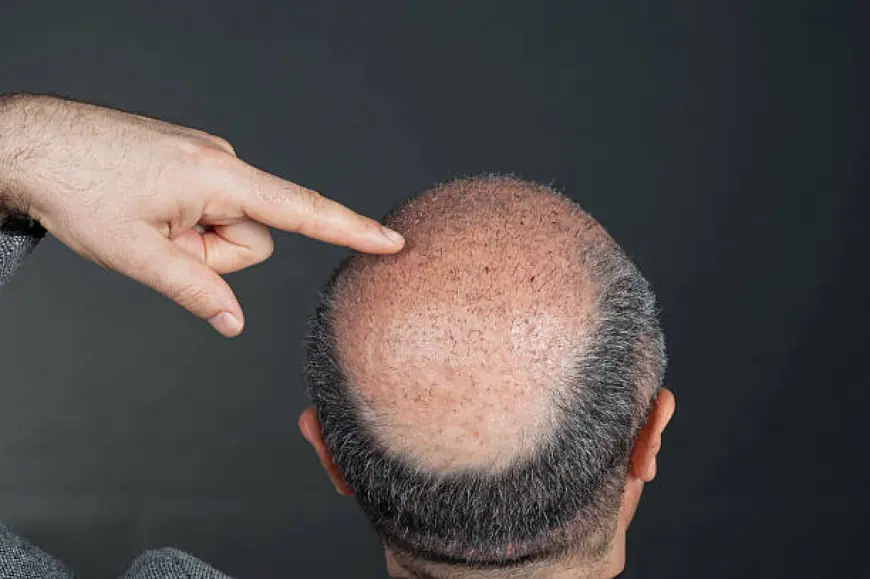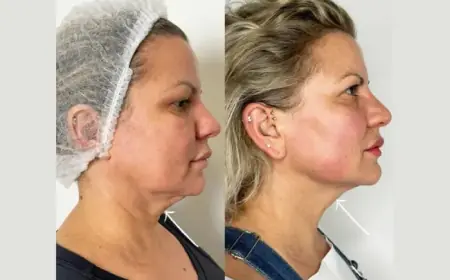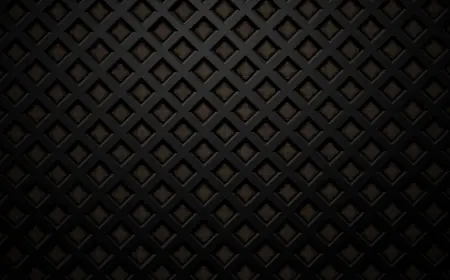FUE Hair Transplant: Your Guide to Restoring Hair Naturally
Among the various techniques available, Follicular Unit Extraction, widely known as FUE Hair Transplant in Riyadh, Jeddah and Saudi Arabia, has gained immense popularity due to its minimally invasive nature and natural-looking results.

Hair loss can be a significant concern, impacting not just appearance but also self-esteem and confidence. For many, it's a gradual process, while for others, it can be rapid. The emotional toll of thinning hair or baldness often leads individuals to seek effective solutions. Thankfully, advancements in medical science have brought forth highly effective and natural-looking hair restoration techniques. Understanding the various options available is the first crucial step in embarking on a successful hair restoration journey, allowing individuals to make informed decisions tailored to their unique needs and goals.
FUE Hair Transplant: A Popular Choice in Saudi Arabia
In Saudi Arabia, particularly in vibrant cities like Riyadh and Jeddah, the demand for sophisticated aesthetic procedures is on the rise, and hair restoration is no exception. Among the various techniques available, Follicular Unit Extraction, widely known as FUE Hair Transplant in Riyadh, Jeddah and Saudi Arabia, has gained immense popularity due to its minimally invasive nature and natural-looking results. This advanced method has transformed the landscape of hair restoration, offering a viable and highly sought-after solution for both men and women experiencing hair thinning or baldness. The widespread availability of FUE clinics and experienced surgeons across the Kingdom reflects a commitment to providing cutting-edge solutions for enhancing appearance and boosting confidence.
What is FUE Hair Transplant and How Does It Work?
FUE (Follicular Unit Extraction) is a modern hair transplant technique that involves extracting individual hair follicles directly from the donor area (typically the back or sides of the head, where hair is genetically resistant to balding) and transplanting them to the recipient area (the balding or thinning areas of the scalp). This method contrasts with older techniques that involved removing a strip of skin.
-
Individual Follicle Extraction: Unlike the strip method (FUT), FUE involves using a micro-punch tool (typically 0.8mm to 1.0mm in diameter) to make tiny circular incisions around individual follicular units. These units, which can contain one to four hairs, are then carefully extracted one by one.
-
Minimally Invasive: The absence of a linear incision means no stitches are required at the donor site, leading to minimal scarring that is often imperceptible, especially with short hair.
-
Targeted Placement: Once extracted, these healthy follicular units are meticulously prepared and then transplanted into tiny incisions created by the surgeon in the recipient area. The surgeon pays close attention to the natural angle, direction, and density of existing hair to ensure a seamless and natural-looking result.
-
Gentle Handling: The precision of FUE minimizes trauma to the follicles during extraction and implantation, contributing to a high survival rate of the transplanted grafts.
This intricate process ensures that each hair follicle is handled with care, maximizing its chance of successful growth in its new location.
The Detailed FUE Hair Transplant Process
Undergoing an FUE hair transplant is a multi-stage process, each step meticulously performed to ensure optimal outcomes.
-
Initial Consultation and Planning: This crucial first step involves a thorough examination of your scalp and hair, discussion of your hair loss pattern, and assessment of your donor area's suitability. The surgeon will discuss your aesthetic goals and design a customized hairline that complements your facial features. This also includes determining the number of grafts required.
-
Donor Area Preparation: On the day of the procedure, the donor area (usually the back of the head) will be shaved to a very short length to allow for precise extraction of individual follicular units. Local anesthesia is then administered to numb the area, ensuring a pain-free experience during extraction.
-
Follicular Unit Extraction: Using specialized micro-punch tools, the surgeon carefully extracts individual follicular units. These units are immediately stored in a nutrient-rich solution to maintain their viability until implantation.
-
Recipient Site Incisions: While the grafts are being prepared, the surgeon creates tiny recipient sites in the balding or thinning areas of the scalp. The angle, depth, and direction of these incisions are critical for achieving a natural-looking hair growth pattern.
-
Graft Implantation: Each individual follicular unit is then meticulously implanted into these recipient sites using fine forceps or specialized implanter pens. This step requires immense skill and precision to ensure the grafts are placed correctly and will grow naturally.
-
Post-Procedure Care: After the implantation is complete, the treated areas are typically cleaned, and sometimes a light dressing is applied. You will receive detailed instructions for aftercare, including how to wash your hair and any medications to take.
The entire procedure can take several hours, often spread over one or two days, depending on the number of grafts.
Recovery and Aftercare: A Smooth Journey to New Hair
The recovery process after an FUE hair transplant is generally comfortable and relatively quick, especially compared to older techniques. Proper aftercare is vital for the successful healing and growth of the transplanted grafts.
-
Immediate Post-Op: You may experience some mild swelling, redness, and tiny scabs in both the donor and recipient areas. This is normal and usually subsides within a few days to a week.
-
Donor Area Healing: The tiny extraction sites in the donor area heal rapidly, often within 7-10 days, leaving behind tiny, almost imperceptible white dots that are easily hidden by surrounding hair.
-
Recipient Area Care: You will be given specific instructions on how to gently wash your hair after a few days, avoiding direct pressure on the newly transplanted grafts. Itching is common but should be managed without scratching.
-
Shedding Phase (Shock Loss): It is normal for the transplanted hairs to shed within 2-4 weeks after the procedure. This is a natural part of the hair growth cycle and indicates that the follicles are entering a resting phase before new, permanent hair begins to grow.
-
New Growth Begins: Around 3-4 months post-op, new hair growth will typically begin. This hair may initially be fine and thin, gradually becoming thicker and stronger over time.
-
Full Results: The final, most noticeable results usually become apparent within 10-12 months, as the transplanted hair continues to grow and mature, blending seamlessly with your existing hair.
Adhering to your surgeon's aftercare instructions is crucial for optimizing the survival rate of the grafts and achieving the best possible outcome.
The Effectiveness and Longevity of FUE Results
FUE hair transplant is widely recognized for its high effectiveness in restoring hair in areas of thinning or baldness, and the results are generally long-lasting.
-
High Graft Survival Rate: When performed by a skilled surgeon, FUE boasts a high graft survival rate, often ranging from 90% to 95%. This means that the vast majority of transplanted follicles will successfully take root and begin to grow.
-
Permanent Hair Growth: The hair follicles extracted from the donor area (usually the back and sides of the head) are genetically resistant to the hormone (DHT) that causes pattern baldness. When transplanted to the recipient area, they retain this resistance, meaning the new hair growth is permanent.
-
Natural Appearance: The precision of FUE allows for the careful placement of grafts to mimic natural hair growth patterns, angles, and density, resulting in a remarkably natural and undetectable outcome.
-
Long-Term Stability: While the transplanted hair is permanent, it's important to note that existing non-transplanted hair in other areas may continue to thin over time due to genetic predisposition. Your surgeon may recommend adjunctive treatments to help preserve existing hair.
With proper care and maintenance, the results of an FUE hair transplant can indeed last a lifetime, providing a sustainable solution to hair loss.
FUE vs. FUT: Making an Informed Decision
While FUE is highly popular, it's essential to understand its differences from Follicular Unit Transplantation (FUT), another effective hair transplant method, to make an informed decision.
-
Harvesting Method: FUT involves surgically removing a thin strip of scalp from the donor area, from which follicular units are then dissected. FUE, as discussed, extracts individual follicular units directly.
-
Scarring: FUT leaves a linear scar in the donor area, which may be visible if hair is worn very short. FUE leaves tiny, punctate scars that are usually imperceptible, even with a shaved head.
-
Downtime: FUE typically has a shorter and more comfortable recovery period at the donor site due to the less invasive extraction method.
-
Number of Grafts: FUT can sometimes yield a larger number of grafts in a single session, making it suitable for extensive hair loss, though FUE technology has advanced significantly to allow for large sessions as well.
-
Donor Area Shaving: FUE often requires shaving the donor area (though unshaven FUE is available), while FUT allows for longer hair to conceal the donor area post-op.
-
Cost: The cost can vary, but generally, FUE may be slightly more expensive per graft due to its labor-intensive nature.
Your surgeon will discuss which method is best suited for your specific hair loss pattern, donor hair characteristics, and aesthetic goals.
The Broad Applications of FUE Hair Transplant
Beyond traditional scalp hair restoration, FUE hair transplant has diverse applications, offering solutions for various hair loss concerns.
-
Beard and Moustache Transplants: FUE can be used to create or enhance beard and moustache density, providing a fuller and more defined facial hair appearance.
-
Eyebrow Transplants: For individuals with thin or sparse eyebrows due to genetics, over-plucking, or medical conditions, FUE can restore natural-looking, permanent eyebrow hair.
-
Scar Camouflage: FUE can be effective in transplanting hair into scarred areas on the scalp or other parts of the body, helping to conceal visible scars from injuries or previous surgeries.
-
Body Hair Transplant (BHT): In cases where scalp donor hair is limited, FUE allows for the extraction and transplantation of hair follicles from other body areas like the chest, back, or legs, though the characteristics of body hair may differ.
-
Density Enhancement: For areas of thinning rather than complete baldness, FUE can be used to increase hair density, providing a fuller appearance without extensive transplantation.
These versatile applications highlight the adaptability and effectiveness of the FUE technique across different aesthetic needs.
Choosing the Right FUE Hair Transplant Surgeon
Selecting the right FUE hair transplant surgeon is arguably the most critical decision in your hair restoration journey. The expertise and artistic eye of the surgeon directly impact the naturalness and success of your results.
-
Board Certification and Credentials: Ensure the surgeon is board-certified in plastic surgery, dermatology, or a related field, with specific training and extensive experience in hair restoration. Look for certifications from reputable international hair restoration societies.
-
Specialization in FUE: While many surgeons perform hair transplants, seek one who specializes in and regularly performs FUE procedures, demonstrating a deep understanding of its nuances and challenges.
-
Experience and Portfolio: Request to see a comprehensive portfolio of their past FUE cases, including detailed "before and after" photos of patients with similar hair loss patterns to yours. Look for natural hairlines and density.
-
Patient Testimonials and Reviews: Read reviews and testimonials from previous patients to gauge their satisfaction levels, the clinic's patient care, and the overall experience.
-
Consultation and Communication: During the consultation, assess the surgeon's communication style. Do they listen to your concerns? Do they provide realistic expectations? Do they thoroughly explain the procedure, potential risks, and aftercare? A good surgeon will prioritize education and clear communication.
-
Team Expertise: Inquire about the experience and qualifications of the entire surgical team, as technicians play a crucial role in graft handling and implantation.
-
Facility Accreditation: Ensure the clinic operates in an accredited facility with high standards of safety and hygiene.
A thorough vetting process will help you find a surgeon who can deliver the natural, long-lasting results you desire for your FUE Hair Transplant in Riyadh, Jeddah and Saudi Arabia.
The Future of Hair Restoration: Precision and Innovation
The field of hair restoration is continually evolving, with ongoing research and technological advancements promising even more refined and effective techniques. Future innovations in FUE are likely to focus on further enhancing graft survival rates, improving donor area recovery, and potentially integrating regenerative medicine approaches to stimulate hair growth. The emphasis will remain on delivering increasingly natural and undetectable results, while minimizing invasiveness and downtime. As Saudi Arabia continues to embrace leading-edge medical technologies, its position as a hub for advanced hair restoration will only strengthen, offering residents access to the very best in hair transplant science and artistry.
Frequently Asked Questions
What sensations should I expect during an FUE Hair Transplant procedure?
During an FUE Hair Transplant, the procedure is performed under local anesthesia, meaning you won't feel any pain in the treated areas (both donor and recipient sites). You might feel some minor pressure or movement sensations, but no sharp pain. Many patients describe the experience as comfortable and relaxing enough to read, listen to music, or even sleep during the multi-hour session. Any discomfort after the anesthesia wears off is typically mild and manageable with over-the-counter pain medication.
How soon after an FUE Hair Transplant can I see the initial signs of new hair growth?
While the full, mature results of an FUE Hair Transplant take about 10-12 months to become visible, you can typically expect to see the first signs of new hair growth around 3-4 months after your procedure. It's important to remember that most of the transplanted hairs will shed within the first few weeks (this is normal "shock loss"), but this signals that the follicles are entering their new growth phase. The new hairs will initially be fine and thin, gradually thickening and maturing over the subsequent months.
Will an FUE Hair Transplant look completely natural, and will anyone be able to tell I had a procedure?
When performed by a skilled and experienced surgeon, an FUE Hair Transplant can look incredibly natural and virtually undetectable. The key to natural results lies in the surgeon's ability to extract individual follicular units and then implant them with meticulous attention to the natural angle, direction, and density of your existing hair. A good surgeon will also design a hairline that complements your facial structure and age, ensuring a seamless blend with your native hair so that it looks and feels completely natural.
What factors should I consider when choosing an FUE Hair Transplant surgeon?
Choosing the right FUE Hair Transplant surgeon is crucial for successful results. You should look for a surgeon who is board-certified in a relevant specialty (e.g., plastic surgery, dermatology) with specific expertise and extensive experience in FUE. Review their portfolio of "before and after" photos, paying attention to natural-looking hairlines and density. Seek patient testimonials and ensure the clinic maintains high standards of safety and hygiene. Most importantly, have a thorough consultation to assess their communication style, whether they provide realistic expectations, and if you feel comfortable and confident with their approach.
For further information and to explore your options for FUE Hair Transplant, you can visit
What's Your Reaction?
 Like
0
Like
0
 Dislike
0
Dislike
0
 Love
0
Love
0
 Funny
0
Funny
0
 Angry
0
Angry
0
 Sad
0
Sad
0
 Wow
0
Wow
0


















































